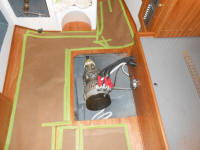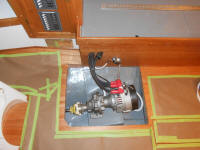
110 Cookson Lane | Whitefield, ME 04353 | 207-232-7600 | tim@lackeysailing.com
Snow Lily | Thursday, March 28, 2013
A few woodworking projects remained within the cabin, including the base cabinet for the upcoming woodstove installation, the engine box, and some other trim details. To begin, I made several measurements of the areas in question.
To start the engine box, I milled some remaining 1/2" cherry plywood into several pieces that I'd use for the sides of the box, and from solid cherry stock glued up a couple thicker pieces from which I'd later mill corner posts. The box would be even in height with the settee to provide an additional seating surface.
Meanwhile, I glued a veneer of 1/4" cherry plywood to the top of the plywood substrate panel I'd made earlier for the woodstove platform and, when the glue cured, trimmed the laminated panel to its final dimensions of 16" square.
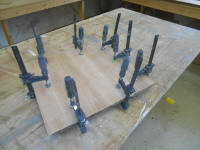
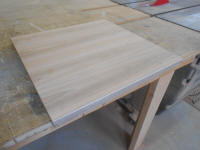
In the boat, using measurements determined months earlier during earlier mockup efforts as my guideline, I confirmed the overall height of the base cabinet for the woodstove, allowing for the required airspace and the thickness of the upper platform, which would be made from heat-resistant material as required.
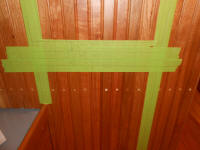
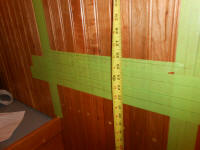
With measurements confirmed and finalized, I built a base cabinet from structural plywood (9mm), incorporating a door opening into the starboard side to allow wood storage within the cabinet. I secured the cabinet together with cleats, glue, and screws. The fourth side would be against the main bulkhead and didn't need a full back, so I installed cleats that would hold the base at the proper width and allow a means of securing the cabinet to the bulkhead.
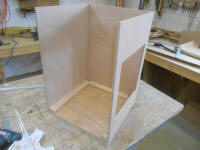


With the cabinet structure complete, I test-fit it in the boat, removing a section of settee fiddle and base trim to allow the new cabinet to fit into the corner. I marked the settee height on that side of the cabinet for future reference.
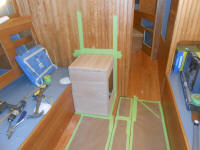

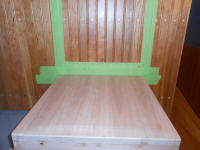

Back in the shop, I installed cherry beadboard paneling on the exposed sides of the cabinet, extending the beadboard only partway down the port side since the remainder would be beneath the level of the settee, and installed some trim around the top edge to hide the beadboard endgrain. Afterwards, I finish-sanded the piece, and applied a sealer coat of varnish.

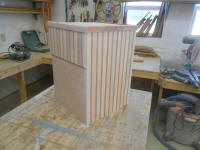
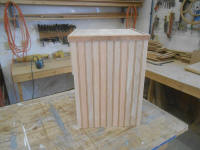
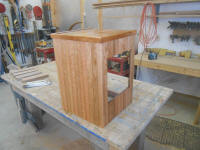
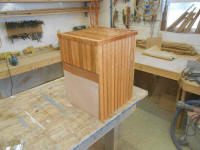
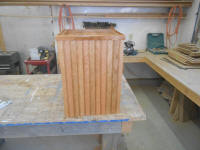
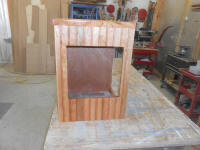
With the time remaining in the day, I varnished the head door, and milled the glued-up corner posts for the engine box to their final dimensions.
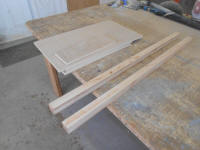
Total Time on This Job Today: 7.5 hours
